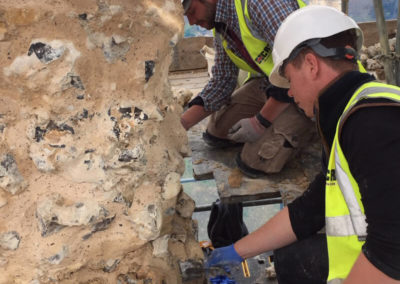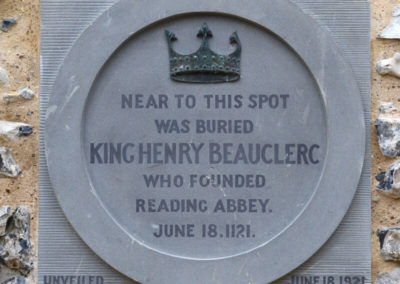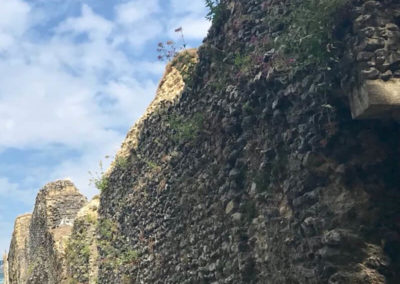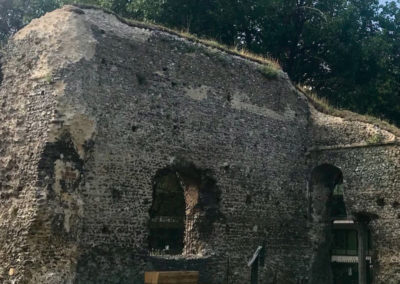Project overview
Project overview
Reading Abbey ruins closed to the public due to its deteriorating condition. Reading Borough Council launched its ‘Reading Abbey Revealed’ project with the aim of conserving the scheduled and listed remains and re-opening them to the public by spring 2018. CRL Restoration, (Principal Contractor) appointed Cliveden Conservation as specialist sub-contractor to consolidate the existing masonry walls with lime mortar, restore fallen flint and rebuild some sections
Summary of the conservation work carried out
The main challenge was the extent of the deterioration and the amount of loose masonry over large areas of the Abbey. Lack of maintenance and incompatible repair materials had escalated the fragile condition of the ruins. The schedule of works included making safe the tall rubble walls by securing loose masonry, consolidating friable mortar and applying shelter coats to protect the masonry and mortars.
Cliveden Conservation recommended using hot lime mortar as the best method of replicating the historic mortars. Different mortar types were analysed and trialled to find a perfect match. A toolkit of repair methods was then agreed and applied systematically to the ruined walls; using a grid system the team were able to easily identify the location and repair type.
The arrival of the Beast from the East brought high winds and cold frosts to the Abbey. The team needed to tailor their programme and methodology to ensure productive working continued throughout the winter months.
Results
Cliveden Conservation worked closely with Reading Borough Council, Hampshire Property Services, Historic England and CRL Restoration to ensure the ruins were conserved using an informed methodology based on research and developments in material specification. The use of hot lime mortar provided an effective and sympathetic solution safeguarding the future of Reading Abbey Ruins.
The towering walls of this awe-inspiring structure are now safe once more for visitors to enjoy. A demonstration of hot mix mortars was given by Cliveden Conservation as part of the opening celebrations where visitors could learn about the consolidation works to the ruins. Cliveden Conservation were asked by Reading Borough Council to recreate a plaque marking the burial of King Henry I, youngest son of William the Conqueror, for the Abbey Ruins
Project details
Client:
Reading Borough Council
Main Contractor:
CRL Restoration
Sub Conservation Contractor:
Cliveden Conservation
Category:



